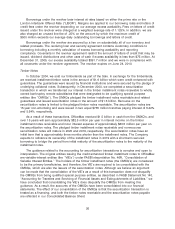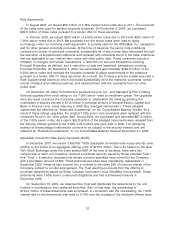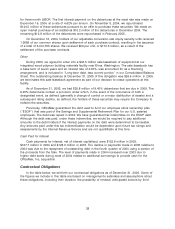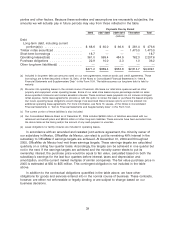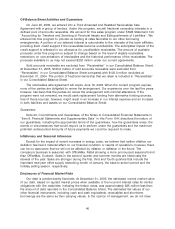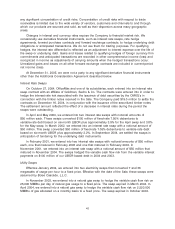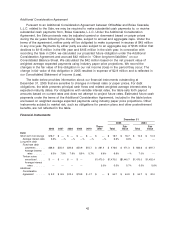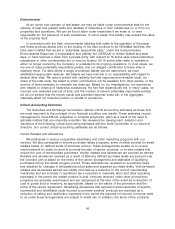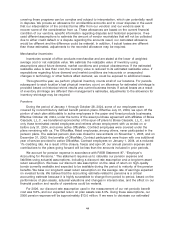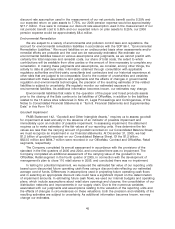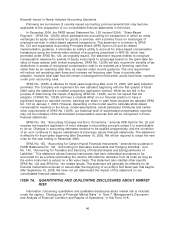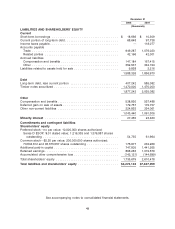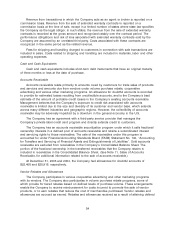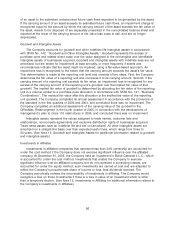OfficeMax 2005 Annual Report Download - page 50
Download and view the complete annual report
Please find page 50 of the 2005 OfficeMax annual report below. You can navigate through the pages in the report by either clicking on the pages listed below, or by using the keyword search tool below to find specific information within the annual report.Recently Issued or Newly Adopted Accounting Standards
Following are summaries of recently issued accounting pronouncements that may become
applicable to the preparation of our consolidated financial statements in the future.
In December 2004, the FASB issued Statement No. 123 (revised 2004), ‘‘Share-Based
Payment,’’ (SFAS No. 123(R)) which addresses the accounting for transactions in which an entity
exchanges its equity instruments for goods or services, with a primary focus on exchanges of
employee services in share-based payment transactions. This statement is a revision to SFAS
No. 123 and supersedes Accounting Principles Board (APB) Opinion 25 and its related
implementation guidance. It eliminates an entity’s ability to account for share-based compensation
transactions using the intrinsic-value method of accounting prescribed in APB 25, which was
permitted under SFAS No. 123, as originally issued. The statement requires entities to recognize
compensation expense for awards of equity instruments to employees based on the grant-date fair
value of those awards (with limited exceptions). SFAS No. 123(R) will also require the benefits of tax
deductions in excess of recognized compensation cost to be reported as a financing cash flow,
rather than as an operating cash flow, as required under current guidance. The new requirement
will reduce net operating cash flows and increase net financing cash flows in periods after
adoption, however total cash flow will remain unchanged from that which would have been reported
under prior accounting rules.
SFAS No. 123(R) is effective for fiscal years beginning after June 15, 2005, with early adoption
permitted. The Company will implement the new standard beginning with the first quarter of fiscal
2006 using the statement’s modified prospective application method. While we are still in the
process of determining the impact of applying SFAS No. 123(R), we do not expect that the
adoption of SFAS No. 123(R) will have a material effect on our financial position or have a
significant impact on reported income, earnings per share or cash flows because we adopted SFAS
No. 123 on January 1, 2003. However, depending on the model used to calculate stock-based
compensation expense in the future, model assumptions, actual participant forfeitures and certain
other requirements of SFAS No. 123(R), our historical level of stock-based compensation expense
may not be indicative of the stock-based compensation expense that will be recognized in future
financial statements.
SFAS No. 154, ‘‘Accounting Changes and Error Corrections,’’ amends APB Opinion No. 20 and
requires retrospective application of most changes in accounting principle unless it is impracticable
to do so. Changes in accounting estimates continue to be applied prospectively, and the correction
of an error continues to require restatement of previously issued financial statements. The statement
is effective for fiscal years beginning after December 15, 2005. We will be required to adopt the new
rules for the year ending in December 2006.
SFAS No. 155, ‘‘Accounting for Certain Hybrid Financial Instruments,’’ amends the guidance in
FASB Statements No. 133, ‘‘Accounting for Derivative Instruments and Hedging Activities,’’ and
No. 140, ‘‘Accounting for Transfers and Servicing of Financial Assets and Extinguishments of
Liabilities.’’ This statement allows financial instruments that have embedded derivatives to be
accounted for as a whole (eliminating the need to bifurcate the derivative from its host) as long as
the entire instrument is valued on a fair value basis. This statement also clarifies other specific
SFAS No. 133 and SFAS No. 140 related issues. This statement will generally be effective for all
financial instruments acquired or issued after the beginning of an entity’s first fiscal year that begins
after September 15, 2006. We have not yet determined the impact of this statement on our
consolidated financial statements.
ITEM 7A. QUANTITATIVE AND QUALITATIVE DISCLOSURES ABOUT MARKET
RISK
Information concerning quantitative and qualitative disclosures about market risk is included
under the caption ‘‘Disclosures of Financial Market Risks’’ in ‘‘Item 7. Management’s Discussion
and Analysis of Financial Condition and Results of Operations’’ in this Form 10-K.
46


